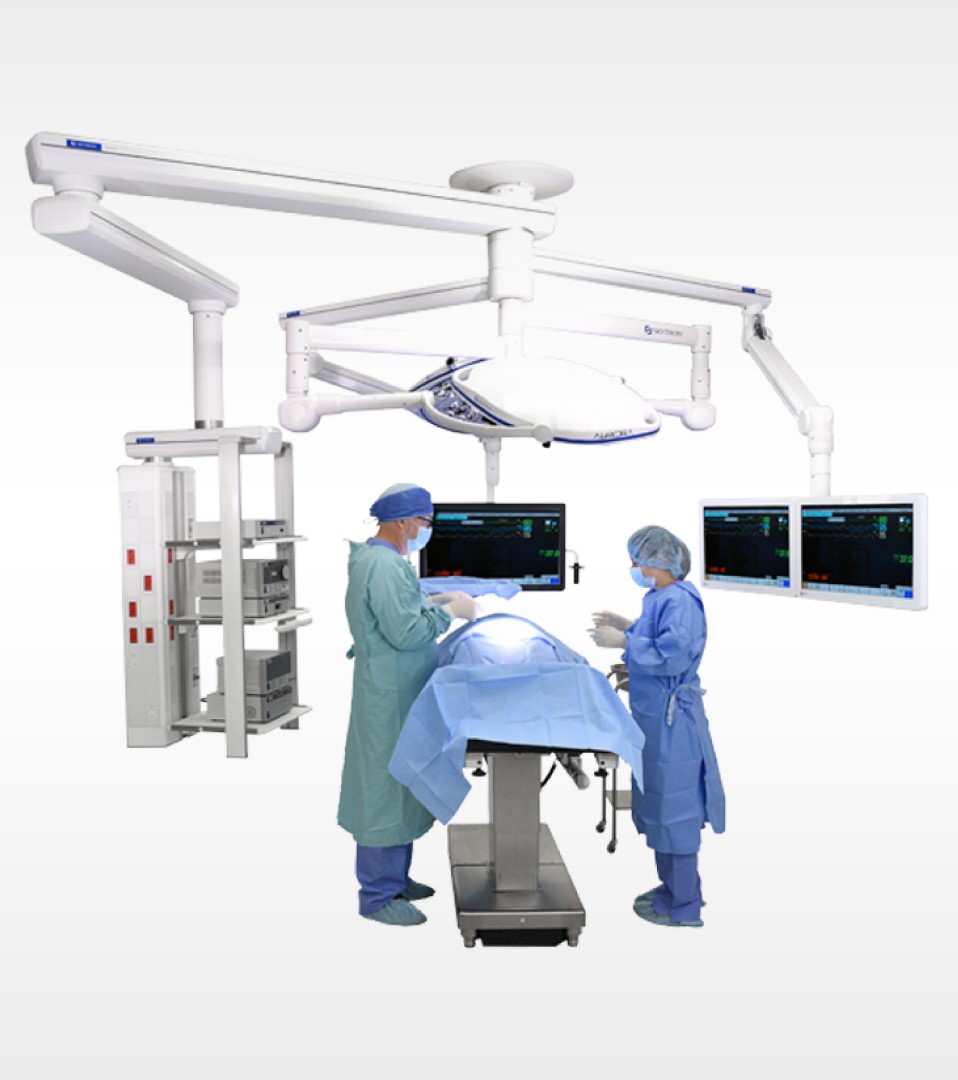
-
Written ByRebecca Kinney
-
PublishedAugust 2, 2022
Creating great partnerships in healthcare is powerful in many ways. It creates collaboration and innovation as a way to improve quality patient care. It seems that left and right large companies are acquiring smaller ones. That while offerings and product availability increase, companies are seemingly losing that “personal touch”. In this write up we want to explain what we believe a great partnership looks like from a broad organizational perspective as well as the interdepartmental outlook and the individual roles in surgery.
Recently, Skytron had the great pleasure of partnering with Arthrex. We have come together as industry leaders collaborating to expand advanced operating room technology and infrastructure solutions for hospitals, surgical centers. You can read more about the partnership here: https://dev.skytron.com/press-releases/arthrex-skytron-announce-partnership-to-address-operative-care-facility-needs/
As our industry continually evolves, we believe that collectively we are stronger when we come together at a company and internal level. Helen Keller once said “Alone we can do so little; together we can do so much.” Let’s take a look at a few ways we can leverage collaboration to improve surgical quality and patient care.

Organizational level partnerships
When organizations partner together, we believe that the positive outcomes can include but are not limited to:
- Increased advancements in technology
- Streamlined product offerings and more comprehensive product suites
- Market reach enhancements
- Larger team breadth and local teams
- Purchase ease and a “one-stop-shop solution”
- Long-term sustainability and support
This is the broad outlook perspective, yet we believe the true magic happens at a facility level. One hospital and surgery center at a time. As facilities have access to what they need on a clinical level for patient care, they can more easily enhance internal best practices. So, what exactly do great interdepartmental partnerships look like?
Interdepartmental partnerships
When it comes to surgery whether it be in a hospital or ambulatory center the power of internal collaborations will make or break the workplace cultural. We visited the power of partnering with infection prevention in a recent blog that can be found here: 3 Ways to Partner with Infection Prevention – Skytron, LLC.
Yet, the big picture of internal collaboration starts with taking a step back from your role to walk a mile in the shoes of supporting roles. Let’s review five key players in the operating room; the surgeon, OR nurses, scrub technicians, sterile processing technicians, and management/team leads. In gaining more clarity on what a day looks like for them, maybe it will help us understand how we can best communicate and collaborate on their level.
The Surgeon
Typically, a surgeon has over a decade of education under their belt. They have worked tireless hours of residency, and endured many a sleepless night to have the title of “doctor”. They not only have cases in the operating room, but a minimum number of office visits that they have to achieve. They have call rotations, and if weekend call was on their calendar when they arrive for a Monday morning 0700 case, they’ve slept only a few hours. Surgery is a key revenue generator for them as well, and every minute in the OR counts.
The Nurse
An OR nurse has a skillset that can apply to any surgery, they manage all of the activities within the room, they can be assigned as a circulating nurse (manages everything beyond the surgical field-assisting anesthesia, managing the counts, charting, and maintain the OR flow), or a scrub nurse (scrubbed into the procedure and hands on) depending on their assignment for the day. They communicate with the patient before the procedure, and post-operative as well. They have to be prepared for the unexpected at any turn. They have a very busy role in the OR and run on all cylinders.
The Surgical Technician
Often referred to as a scrub tech, this role is one of support during procedures. They aid in room setup, instrument inspection prior to procedure, they help maintain the sterile field, assist with room turn, they are experts in “sterile technique”. They facilitate the surgeon by helping to predict their needs in terms of instrumentation, and do instrumentation hand off during cases. This position is what we commonly refer to as the “aseptic pro”.
Sterile Processing (SP) Technician
The complex role of an SP tech is to process and sterilize equipment and supplies from the operating suites and nursing units of hospitals. These medical professionals are specially trained in the proper care, cleaning, decontamination and sterilization of all surgical instrumentation. They may also be involved in preparing and packaging specialized medical equipment for patient use in various areas of the facilities. Often Sterile Tech’s will operate and service advanced decontamination and disinfecting apparatus such as ultrasonic washers, steam autoclaves, liquid-based washer/disinfectors and vaporized hydrogen peroxide sterilization systems. (1)
The Management Crew
(Team leads, Assistant Nurse Managers (ANMs), Sterile Processing Manager, and Director of Surgery)
Whether it’s a nurse manager (typically segregated by surgical specialty) or a department head (sterile processing or operating room) this role is jam packed with responsibility. From managing workflow, staff scheduling, meeting with vendor representatives, and internal departmental meetings they have a big job. When you may feel like they aren’t “boots on the ground” or your voice and concerns aren’t being heard that might not always be the case.
Each of these five key players in surgery play a critical role and by understanding each one better, we can then work collaboratively towards positive patient outcomes.
Products and services are important, but a company is only as strong and it’s people and the partnerships formed.
Citations:
1. https://www.sctoday.edu/blog/understanding-important-role-sterile-processing-technician/






